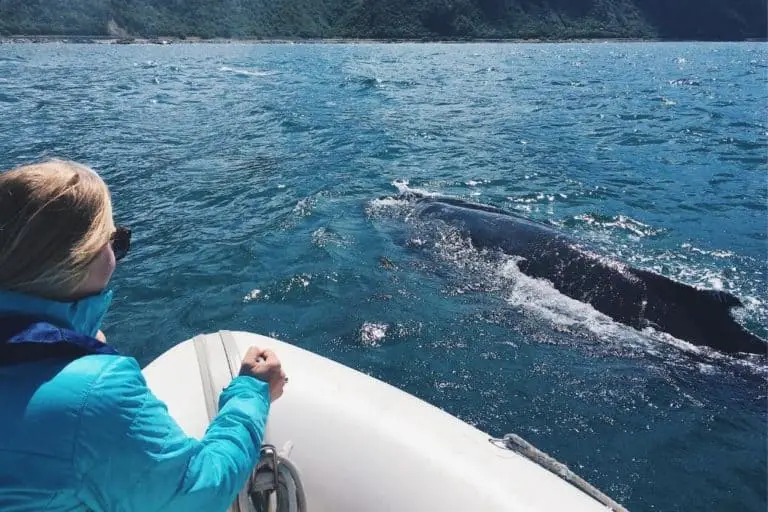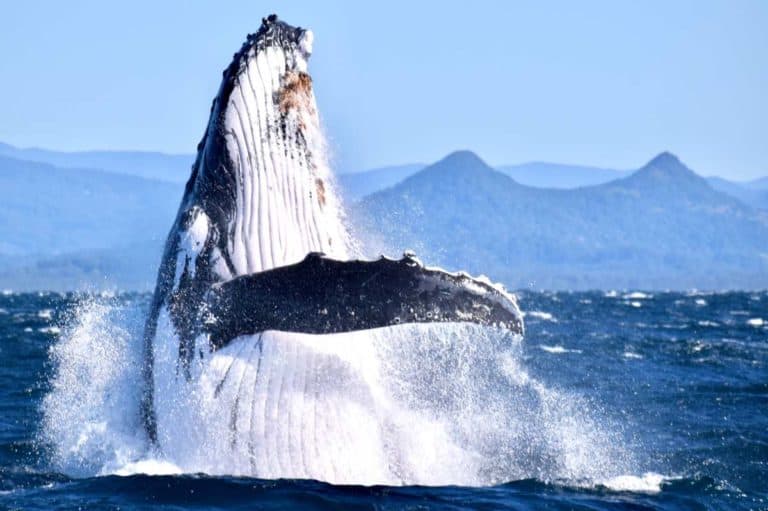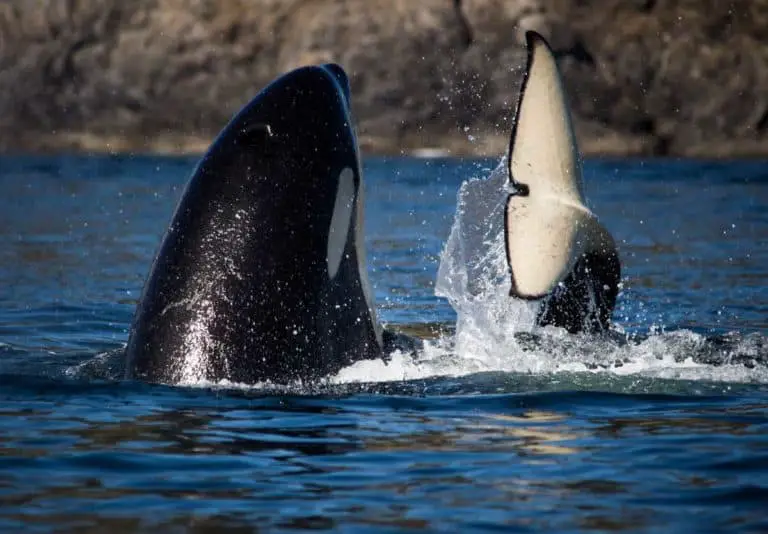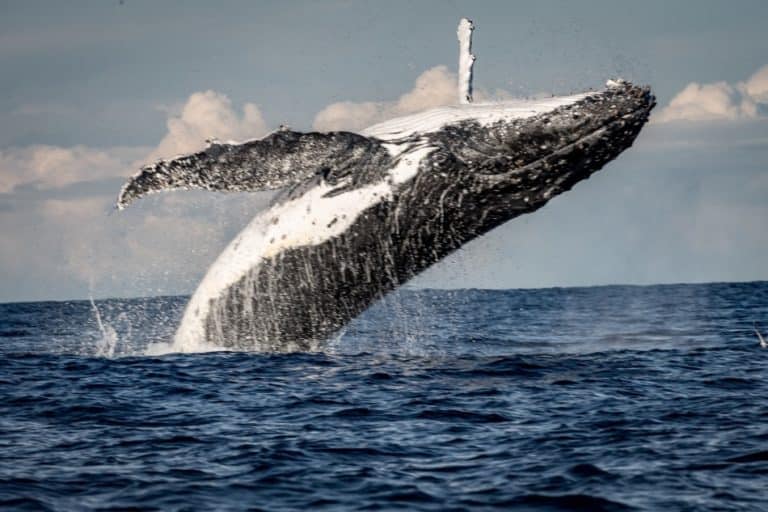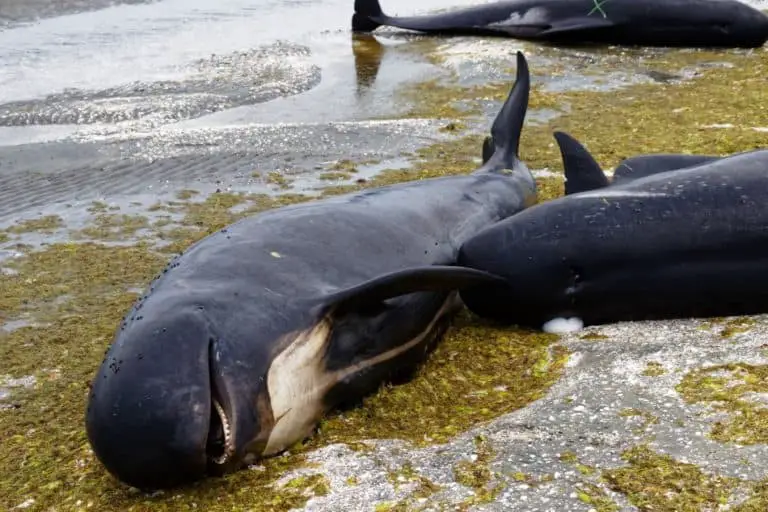What are Barnacles on Whales?
Barnacles are small crabs that attach themselves to whales for protection and food. They inhabit the skin of most whale species, except for toothed whales, such as dolphins. In some extreme cases, they grow in massive colonies, forming a thick crust over large areas of their bodies. At first, the barnacle feeds on the whales’ raw flesh but eventually transforms into a harmless filter-feeder.
Below is an image of a humpback whale with barnacles covering its entire body, except for the lower jaw and cheek. These crustaceans have caused significant problems for many whales, such as those living in polar waters or tropical seas with high levels of sunlight.
The barnacles have been known to cause serious skin damage, clogging the pores and causing cysts. Long-term infestation can lead to infection from the build-up of bacteria on top of the protection layer of the gristle exuded by the crustaceans and a hormonal imbalance caused by stress.
Humpback whales have been known to use their powerful tails to shake off some of their barnacles, which sometimes end up sticking onto nearby boats! Scientists believe this is done to rid themselves of the parasites.
Are barnacles harmful to whales?
Barnacles on whales have been known to cause skin irritation and even leave open wounds, but they won’t kill the animals. However, when a barnacle infestation results in a large number of irritating lumps that can clog pores and make breathing difficult, the animal must spend more energy to avoid infection or suffocation.
How do whales get rid of barnacles?
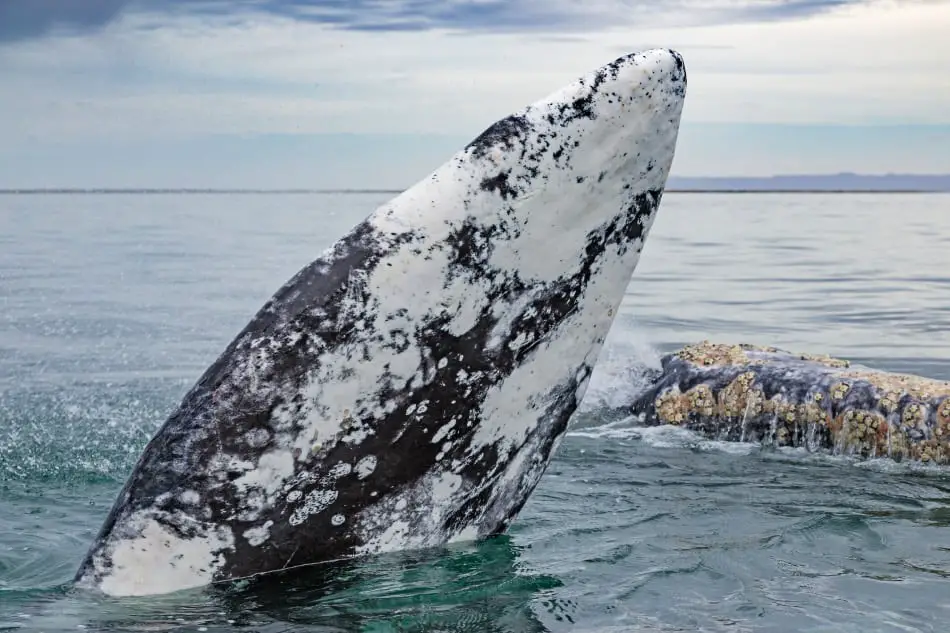
Whales have few natural predators apart from killer whales and sperm whales. They can swim very fast through the water, making it difficult for predators to keep up with them.
They also use their fins, tailor flippers to attack prey as well as defend themselves against predators. The only real threat they face is from humans who hunt them for food and their valuable blubber, bones, and teeth.
One of the main reasons whales end up with barnacle infestations is because they can’t easily clean themselves like mammals on land. Instead, they have to wait until they’re in shallow water or on a beach before attempting to remove them.
Humpbacks are known to use their powerful tails to hit the barnacle-covered part of their body against the seafloor, which knocks off some of the crustaceans. Other species scrape them off using their teeth or rub against rocks or coral reefs.
Here’s another interesting fact:
Whales have been known to excrete dark ambergris from their intestines. This substance is similar to rubber, so whales use it to protect their skin from barnacles and other sharp objects they might encounter in the ocean.
But this isn’t a very effective method of removing the crustaceans as some of them always manage to attach themselves again.
Why don’t killer whales have barnacles?
Barnacle larvae attach themselves to rocks, boat hulls, and even other animals found in the ocean. They are carried around until they find a suitable place to settle down.
Killer whales don’t have barnacles because of their hunting habits and environment. When they hunt for prey in colder waters, such as polar seas during wintertime, they prevent barnacle larvae from attaching to their skin.
Additionally, their diet consists of live fish, which are difficult for the barnacles to attach themselves to. This is one reason why they don’t have any signs of infestation.
Why do barnacles go on whales?
There are two main reasons for barnacles attaching themselves to whales.
- They use the rough surface of whale skin, especially around their blowholes and flippers, as an attachment point.
- The whales also secrete a substance called ambergris to coat their skin as protection against parasites. This makes it much easier for the crustaceans to attach themselves.
Are barnacles bad?
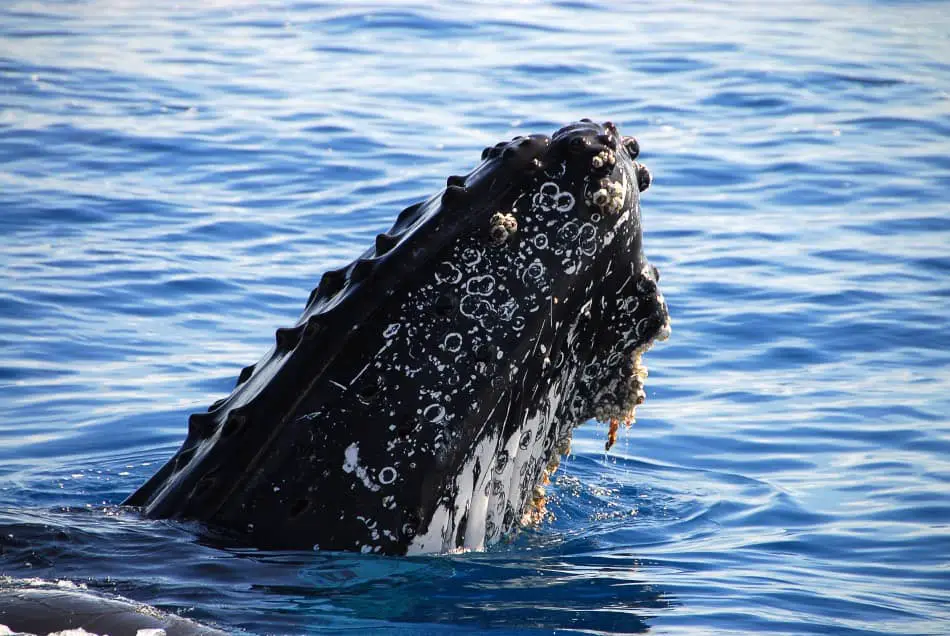
Barnacles are not bad, but they are unsightly. They also damage a whale’s skin and result in infection if the animal doesn’t have easy access to freshwater. However, whales need barnacles for their survival as they’re a source of food and essential nutrients.
There is no doubt about it – whales could live without barnacles, but it would be more difficult for the whales to survive if they didn’t have some form of protection against parasites. The barnacles are just like humans – we need them as well!
What is the benefit of barnacles?
Barnacles help whales breathe. As mentioned above, these crustaceans attach themselves to the whale’s air sacs and make them larger to increase their oxygen intake.
The barnacles also produce a chemical that prevents the fin of sperm whales from rotting away, which has been proven in an experiment conducted by scientists at the Woods Hole Oceanographic Institution.
The whale’s barnacles are a natural defense system that helps protect the animal against infection and disease. This is especially true when the whales travel to different places due to their migratory lifestyle.
Whales also have strong social bonds, forming close-knit groups with other individuals to protect themselves from predators. The barnacles, which stick to the whales to form an armor layer, are another vital part of their defense mechanism.
So why do whales have barnacles?
Whales can’t choose what they’re born with, and they have no control over it! They aren’t exactly designed to look good. Barnacles don’t harm them, but they can be very unsightly.
There are many different barnacle species in the world, of which the most common is the goose barnacles and gooseneck barnacles. Most whale species have few to none, or just a small handful of them unless you count those unfortunate whales that have hundreds of them attached to their body.
Can barnacles be removed?
The only way to remove the barnacles is by scraping or cutting them off. It’s a slow process that can take days or weeks, depending on how many there are.
The task becomes more difficult in cold waters where the crustaceans tighten their grip on the whales and resist removal with all of their might.
Although it may seem like the most effective way of removing the barnacles, this method causes further harm to the whales. If you’re ever in a situation where you need to remove them without killing the whale, please use tranquilizing darts or other similar methods.
Are barnacles alive?
Barnacles are animals, and like all living creatures, they have basic anatomy. This includes a head made of muscles, as well as an outer skeleton for protection. They also have tubes to breathe through and tiny claws to hold on tight.
Some species are parasitic, meaning they eat the host’s flesh while feeding their blood and waste.
In conclusion, I hope this article helped you understand more about barnacles and what they do for whales. If you have any questions or comments, please feel free to leave them in the section below!
